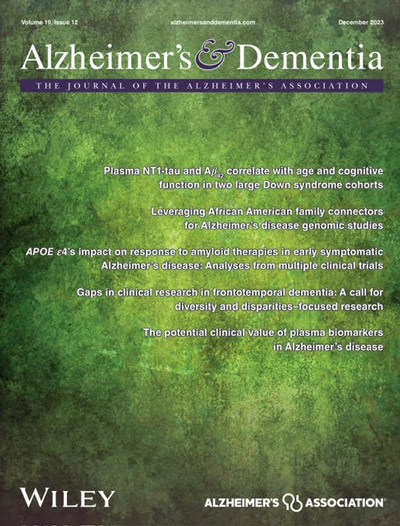Public attitudes toward dementia risk prediction: A mixed-methods study
Abstract
INTRODUCTION
Numerous dementia risk prediction models have been developed, but uptake in clinical practice is poor.
METHODS
We determined public attitude toward dementia risk prediction through the means of a focus group (n = 9) and subsequent online survey (n = 687). Thematic content analysis was used for focus group data and descriptive statistics for survey responses.
RESULTS
Focus group participants expressed reluctance in knowing dementia risk due to fear, emotional burden, and belief that prevention was impossible. Conversely, practical benefits and maximizing present quality of life motivated others to know dementia risk. Of survey respondents, 66.1% would want to know their 10-year risk at present, increasing to 82.3% if preventive medication were available. People perceived their 10-year risk as rather high, yet lower still than their own personal threshold for considering preventive action.
DISCUSSION
Development and implementation of dementia risk prediction tools require attention for personal actionability and emotional impact of risk communication.
Highlights
- Among citizens with a particular interest in dementia, a large group is keen to learn their personal dementia risk, particularly when effective preventive measures are available.
- In focus group participants, hesitancy to learn about dementia risk was common, driven by fear, emotional burden, and doubts about the effectiveness of preventive interventions.
- The majority of survey participants (72%) believed a healthy lifestyle could reduce dementia risk.
- People perceived their 10-year risk as rather high, yet lower still than their own personal threshold for considering preventive action.


 求助内容:
求助内容: 应助结果提醒方式:
应助结果提醒方式:


